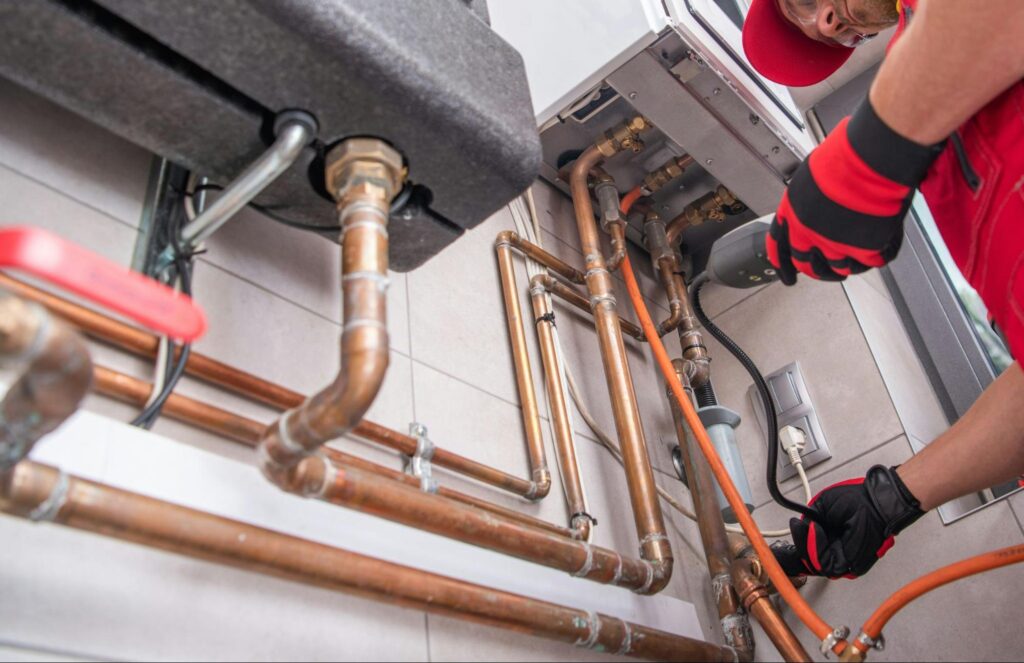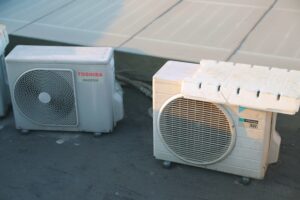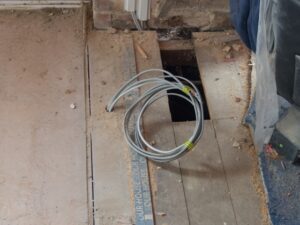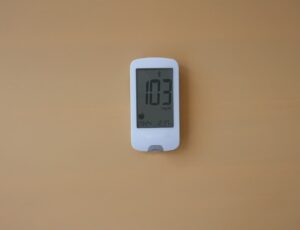When your HVAC system isn’t working properly, it can feel like your home or office is suddenly out of sync. But before you call in the pros, why not try a reset?
It could be the simple solution to get your system back on track.
Resetting your HVAC system is a great first step when you’re facing minor issues. If the system is acting up—whether it’s not cooling or heating properly—a quick reset can often bring it back to life. The process is straightforward and can save you time and money before opting for a more complex troubleshooting method.
So, how do you reset your HVAC system? It’s quite simple:
- Locate the reset button – Usually found on the control panel or behind the service panel.
- Press and hold the reset button – Hold it for a few seconds until the system powers off and back on.
- Wait a few moments – Let the system restart and check if it’s performing correctly.
At Excel Mechanical, we understand how important it is for your heating and cooling systems to run smoothly. That’s why we’re here to guide you through the reset process. If you ever need more extensive HVAC or plumbing solutions, our team is here to provide exceptional service tailored to your needs and budget.
In this blog, you will learn:
- The step-by-step guide to resetting your HVAC system.
- Common issues that might require a reset.
- Safety precautions to ensure your safety during the reset process.
Let’s get started!
Understanding HVAC Systems
An HVAC system controls your home or building’s heating, ventilation, and air conditioning. It includes components like furnaces, air conditioners, ductwork, and thermostats, each of which contributes to maintaining a comfortable indoor climate.
- Heating is typically provided by a furnace or heat pump. These units use energy sources like gas, electricity, or oil to produce heat.
- Cooling is achieved through an air conditioner or heat pump. These systems remove heat from indoors and cool the air.
- Ventilation ensures that fresh air circulates while removing stale air from your space. This is often managed through a series of ducts and vents.
- Thermostats control the temperature. Programmable thermostats can be set to adjust temperatures automatically during the day.
Components of an HVAC system:
- Furnace or Heat Pump
- Air Conditioner
- Ductwork
- Thermostats
Proper installation and regular maintenance are key to a well-functioning HVAC system. They ensure efficiency and longevity.
Safety Precautions
Before resetting your HVAC system, ensure your safety by following these steps.
- Turn Off the Power: Always switch off the power to your HVAC system. Use the main circuit breaker to cut off electricity to avoid any risk of electric shock.
- Use Safety Gear: Wear protective gloves and safety glasses. These will protect you against debris or sharp edges while working around HVAC components.
- Avoid Wet Conditions: Make sure the area around the unit is dry. Water and electricity are dangerous, so keep your working environment safe from moisture.
- Read the Manual: For specific instructions, refer to the HVAC system manual. Each system may have different processes and requirements for a safe reset.
- Check for Loose Wires: Inspect wires and connections before starting the reset. Tighten any loose wires to prevent electrical hazards.
Remember, resetting your HVAC system requires caution. If you feel uncertain, it might be best to call a professional. We offer exceptional quality and value for both residential and commercial needs. We strive to provide the best system tailored to individual needs and budgets.
Pre-Reset Checklist
Before resetting your HVAC system, ensure you have all the necessary information and tools. Identifying your HVAC model, gathering the right tools, and safely powering down the system are crucial steps.
These preparations help prevent mistakes and ensure the reset process goes smoothly.
Identify the HVAC Model
Begin by locating your HVAC system’s model number. This information is often found on a label on the unit’s exterior or inside the access panel. Knowing the model number is essential because it influences the reset process and the tools you might need.
Check the user manual for additional guidance. Many manufacturers offer digital copies on their websites if you’ve misplaced them. Finding this information not only aids in resetting but also in diagnosing any issues.
Having the model number ready helps if you need to contact the manufacturer or a professional.
Gather Necessary Tools
Once you’ve identified your model, gather the tools required for the reset.
Typically, you’ll need a screwdriver, a flashlight, and potentially a voltage tester. These tools help safely access and adjust components of the HVAC system during the reset process.
Organize your tools so that they’re easily accessible. This ensures that you won’t waste time searching for tools when you need them. Having the right tools also prevents damage to the system, especially when handling electrical components.
Being prepared makes the job easier and helps you avoid complications. If you lack the appropriate tools, it might be time to contact experts for assistance.
Power Down the System
Safety is key when working with HVAC systems, so the next step is to power down the system.
- Locate the circuit breaker for your HVAC and switch it off to ensure no electrical flow. This step is crucial to avoid any risk of electric shock.
- Double-check that the system is completely off by attempting to turn it on with the thermostat.
- Once confirmed, you can confidently proceed with the reset process. All power must be safely managed before any other work is done on the system.
By taking these safety precautions, you ensure your safety and the integrity of your equipment.
Resetting the HVAC System
Getting an HVAC system to operate smoothly might involve a system reset. This can solve issues like a unit not running correctly. Understanding the steps involved in finding and using the reset button is important.
Locate the Reset Button
First, you’ll need to find the reset button. It varies by model but is usually placed near or inside the outdoor unit. Look for a small, red, or black button marked “Reset.”
Checking the manufacturer’s manual can guide you to the exact location. Power down the unit before starting this process to ensure safety.
Perform the Reset Procedure
Once located, press the reset button for about three to five seconds.
You should hear a click, indicating the system is beginning to reset. Release the button and wait a few minutes. After resetting, turn the system back on and check if it operates properly.
If issues persist, professional help may be needed.
Post-Reset Steps
After resetting your HVAC system, it’s important to power it up correctly, test its different functions, and ensure everything operates smoothly. Following these steps ensures that your system runs efficiently.
Power Up the System
- To begin, turn the main power switch on for your HVAC unit. This can usually be found on the unit or a wall.
- Check your electrical panel’s circuit breaker to ensure it is set to the “on” position.
- Make sure all settings on your thermostat are correct.
- Set your desired temperature and ensure that it reflects your preferences for heating or cooling.
- Double-check these settings to prevent accidental malfunctions.
Test the HVAC Functionality
After powering up, test the HVAC system’s basic functions.
- Start with the fan by setting it to run continuously.
- Listen for unusual sounds, like rattling or humming, which may indicate a problem.
- Switch between heating and cooling modes. Let each mode run for a few minutes to ensure each function is correct. This can highlight immediate issues that should be addressed quickly.
Taking these steps helps you confirm the system responds correctly to inputs.
Confirm System Operation
Watch for consistent airflow from the vents. This should be steady and reach all areas. Adjust vents and fan settings if necessary for optimal airflow. The system should maintain the set temperature without fluctuation.
If there are problems or if you’re unsure, contact a professional. Excel Mechanical is a leading choice for HVAC and plumbing services, offering exceptional quality and value. Our team understands how to tailor systems to fit your needs and budget.
We aim to enhance comfort and efficiency for both residential and commercial spaces.
Troubleshooting After Reset
After resetting your HVAC system, you might encounter a few issues. Understanding common problems and knowing when to seek professional help are crucial steps in maintaining an efficient system.
Addressing Common Issues
Some HVAC systems may not start immediately after a reset.
- Check the thermostat settings to ensure it’s in the correct mode, verify the circuit breaker hasn’t tripped, and restart the system if necessary.
- If there’s no airflow, inspect the filters for blockages. Clogged filters can restrict air circulation. It’s important to clean or replace them regularly.
- Unusual noises from the system could indicate loose parts or debris. Examine the unit for any visible issues, like loose screws or obstructions.
When to Call a Professional
Certain situations may require the expertise of a professional.
Persistent system failures or unusual electrical issues should not be ignored. If, after troubleshooting, the system still doesn’t work correctly, it’s time to call in an expert.
Professional maintenance is essential for your HVAC’s efficiency and lifespan. Inconsistent temperature control or frequent resets are warning signs. Excel Mechanical provides reliable services to diagnose and fix complex issues.
By choosing us, you ensure your system remains in top condition. We offer customized solutions tailored to your specific needs and budget.
Maintaining Your HVAC System
Proper maintenance keeps your HVAC system running efficiently, saving you money and extending its life. Focusing on regular cleaning and scheduling professional inspections ensures peak performance and prevents unexpected breakdowns.
Regular Cleaning
Keeping your HVAC system clean is key to its efficiency.
Start by changing the air filters every one to three months. This prevents dust and allergens from clogging the system and improves air quality. Check the outdoor unit regularly and clear any debris from around it, like leaves or dirt.
Cleaning the vents and registers is also essential. Dust can gather here and reduce airflow. Open them and vacuum out any accumulated dust. This keeps the air moving freely throughout your home.
Remember to check the condensation drain and clear blockages to prevent water damage.
Scheduled Professional Inspections
Regular inspections by a professional ensure your HVAC system stays in top shape.
Set up a yearly visit to catch issues early. During an inspection, a technician checks for wear and tear, lubricates moving parts and tests the system for efficiency.
Scheduling these inspections with a trusted company like Excel Mechanical guarantees a thorough review of your system. Our team provides tailored services for both residential and commercial properties. This professional attention helps extend the lifespan of your HVAC system and keeps it running smoothly all year.
Contacting usl for your maintenance needs can ensure exceptional quality and service.
Upgrading HVAC Components
If you’re considering upgrading your HVAC components, you can improve efficiency and comfort in your home or business. Upgraded components like smart thermostats, variable-speed fans, and energy-efficient compressors can help reduce energy use and extend the lifespan of your system.
Benefits of Upgrading
- Energy Efficiency: New technologies often use less energy, saving you money on utility bills.
- Improved Air Quality: Upgraded filters and purifiers can remove pollutants and allergens.
- Enhanced Comfort: Better temperature control and airflow provide a more comfortable environment.
Popular Upgrades
- Smart Thermostats: These allow you to control your HVAC system remotely. They learn your schedule and adjust settings to save energy.
- Variable-Speed Fans: These fans adjust their speed to meet heating or cooling demands, using less energy and providing more consistent temperatures.
- Energy-Efficient Compressors: Modern compressors consume less power and reduce wear on the system.
Working with Excel Mechanical guarantees you professional service tailored to your requirements. Whether upgrading existing components or installing new ones, you can trust our team to get the job done right.
Frequently Asked Questions
You may have a few questions about resetting your HVAC system—don’t worry, we’ve got you covered! Here are some common concerns and answers to help you navigate the process smoothly.
Where is the reset button located on an AC unit?
The reset button on an air conditioning unit is often found on the control panel or inside the blower compartment. It might be a small red or yellow button. Check your user’s manual for the exact location, which can vary by model.
How do you reset the thermostat for an air conditioning system?
To reset your thermostat, turn off the power at your electrical panel and wait about a minute before turning it back on. This simple reset can fix minor issues or glitches. Once the thermostat reboots, make sure the settings are correct.
What steps are involved in restarting an AC compressor?
First, turn off the power to your AC unit. Then, find the outdoor compressor and locate its reset button. Press this button firmly and hold it for a few seconds. Afterward, restore power to the unit and adjust the thermostat to your desired settings.
How can you reset the AC unit in an apartment setting?
The process may involve accessing the unit’s main power source in an apartment. Make sure to secure permission from building management if needed. Then, follow the standard reset procedures by briefly cutting power and restarting the unit.
What should you do if the AC reset button is not responding?
If the reset button does not work, check for any visible signs of damage or issues. Also, ensure the AC’s power supply is active. If the problem persists, you may need to contact professionals like Excel Mechanical for specialized help.
Why would an air conditioner require a reset, and what does it entail?
Air conditioners may need a reset due to power surges, tripped breakers, or system errors. Resetting involves turning the system off briefly to clear errors. This can restore functionality and improve performance.




